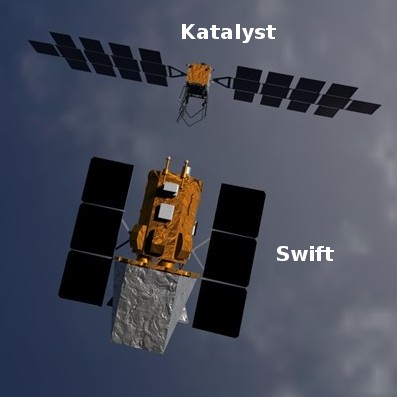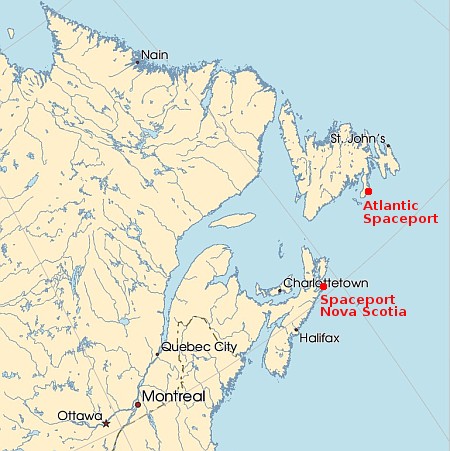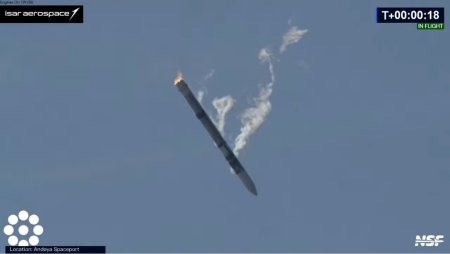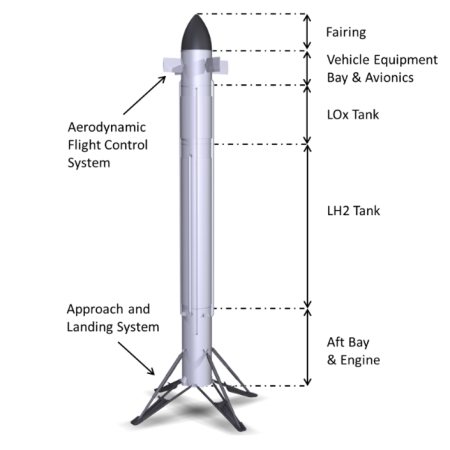NASA awards orbital servicing startup Katalyst contract to save the Gehrels Swift space telescope

Katalyst’s proposed Swift rescue mission.
Click for original image.
NASA today announced that it has awarded the orbital servicing startup Katalyst a $30 million contract to use a robotic servicing satellite to rendezvous and attach itself to the Gehrels Swift space telescope and raise its orbit.
Right now the telescope’s orbit is decaying, and it will burn up sometime in 2029 if something isn’t done. As one of the most successful low-cost astronomy space telescopes ever launched — central to the study of gamma ray bursts — spending this small amount to save Gehrels seems a no-brainer. In mid-August NASA had awarded Katalyst and a second company small contracts to study whether they could do this mission. Today’s announcement means NASA liked Katalyst’s proposal.
Whether this startup can do it however remains unknown. It appears from its own press release today describing this contract award that the company decided to add Gehrels to its already planned first demo servicing mission planned for next year.
The schedule is also unprecedented: while satellite servicing typically takes years to plan, Katalyst must be ready to launch in eight months, with docking operations scheduled for mid-2026, to save Swift before it burns up.
…Katalyst was already on schedule for an in-space demonstration of its rendezvous, proximity operations, and docking technology for June 2026. The demonstration would buy down technical risk ahead of the planned launch of Katalyst’s multi-mission robotic spacecraft, NEXUS, in 2027. When NASA raised the alarm about Swift, Katalyst seized the opportunity to pivot to a live rescue operation which would demonstrate similar capabilities.
The mission is even further risky in that Swift has no grapple or docking port for Katalyst’s satellite to attach to. Instead, it “will rely on a custom-built robotic capture mechanism that will attach to a feature on the satellite’s main structure–without damaging sensitive instruments.”

Katalyst’s proposed Swift rescue mission.
Click for original image.
NASA today announced that it has awarded the orbital servicing startup Katalyst a $30 million contract to use a robotic servicing satellite to rendezvous and attach itself to the Gehrels Swift space telescope and raise its orbit.
Right now the telescope’s orbit is decaying, and it will burn up sometime in 2029 if something isn’t done. As one of the most successful low-cost astronomy space telescopes ever launched — central to the study of gamma ray bursts — spending this small amount to save Gehrels seems a no-brainer. In mid-August NASA had awarded Katalyst and a second company small contracts to study whether they could do this mission. Today’s announcement means NASA liked Katalyst’s proposal.
Whether this startup can do it however remains unknown. It appears from its own press release today describing this contract award that the company decided to add Gehrels to its already planned first demo servicing mission planned for next year.
The schedule is also unprecedented: while satellite servicing typically takes years to plan, Katalyst must be ready to launch in eight months, with docking operations scheduled for mid-2026, to save Swift before it burns up.
…Katalyst was already on schedule for an in-space demonstration of its rendezvous, proximity operations, and docking technology for June 2026. The demonstration would buy down technical risk ahead of the planned launch of Katalyst’s multi-mission robotic spacecraft, NEXUS, in 2027. When NASA raised the alarm about Swift, Katalyst seized the opportunity to pivot to a live rescue operation which would demonstrate similar capabilities.
The mission is even further risky in that Swift has no grapple or docking port for Katalyst’s satellite to attach to. Instead, it “will rely on a custom-built robotic capture mechanism that will attach to a feature on the satellite’s main structure–without damaging sensitive instruments.”







